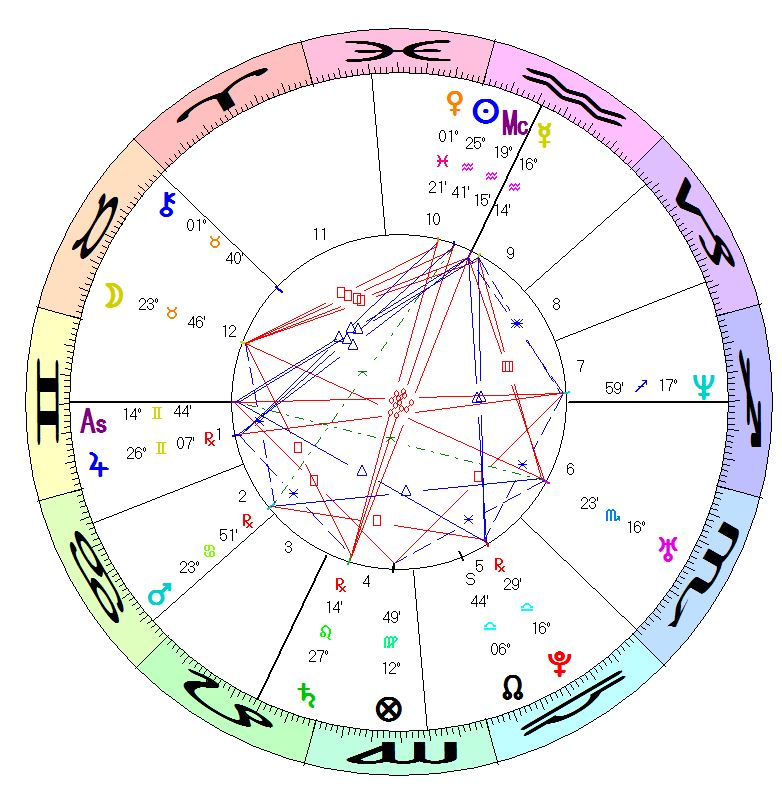Many people often wonder “How does astrology work?” The intent of this article is to give you some insight. The study of astrology has been around over 5,000 years. Our Western astrology comes from the Babylonians, Chaldeans, Greeks, Egyptians, Arabs, and Europeans. Other societies with their own systems include the Indians (a.k.a. Vedic), Mayans, and Chinese. All astrology started with the ancients looking to the sky for answers. They noticed patterns in the sky when certain events happened on earth, and they noted the correlations. Over the course of time, several uses of astrology grew with the most popular today is the analysis of a person’s birth chart which is called natal astrology. Sun sign astrology, which is your horoscope, is a derivative of natal astrology.
Natal astrology requires your date, time, and place of birth to construct your birth chart. At the moment of your first breath, the planets leave an imprint on you, like a stamp. Just as DNA is a blueprint for your body, your astrological chart blueprints how you will behave. Not that your life is predestined. DNA can predispose you to be big-boned, but you can be overweight or muscular. Similarly, your birth chart can say you have a tendency to be sarcastic or sharp-witted, but you make the final choice.
In a natal chart, there are 10 significant heavenly bodies for astrologers: Sun, Moon and 8 planets (Earth is excluded). As well as containing twelve signs, your birth chart is divided into 12 houses, each representing a different facet of life. (A sample chart is shown below.) An astrologer examines the relationships of the planets, signs, and houses to discover information about you: parents, siblings, friends, and partners you attract and why, how you think if you are religious or spiritual, and how you handle money. Even your face and body shape can be derived from your chart. But you always have the final decision on how to manifest your potential.

Astrologers are commonly asked, “What if two people share the exact same time and place of birth? Should they not have the same life?” The individual’s environment and upbringing will have a major role in how they handle life situations, but the behavioural traits will be the same. For example, one person is born into a rich family, and the other into a poor family. The astrologer, by looking at the birth chart, determines there will be financial strife over the next few months. The poor person may be unable to pay rent, whereas a rich person may lose millions on a bad investment.
Whether rich or poor, we share common problems that can be explained with astrology, such as a seven-year itch, and a mid-life crisis. The seven-year itch is caused by Saturn and Venus. Saturn affects issues of limitations and structure, and Venus affects relationships. Saturn has an approximate 29-year cycle. The Saturn orbit eventually reaches the position where Venus was when you were born (natal Venus). In seven years, Saturn travels to 90° relative to your natal Venus, then opposite, then again to 90°. These configurations occur about seven years apart and they make you examine and question relationships.
Uranus moves opposite where it was at the time of your birth when you are about 42 years old. This position causes an incredible urge for freedom. At roughly the same time, Neptune is at 90° relative to where Neptune was at the time of your birth. You, therefore, question all your ideals and dreams, realising that you cannot achieve them all. This is the mid-life crisis.
All in all, your astrological chart is like a celestial vehicle. You decide whether to continue on the highway, or turn off to explore other avenues. The astrologer is there to read the road signs for you.
You can also read this article: www.soulbody.ca/understanding-astrological-concepts
Book an Astrological Reading
Find out how much more you are than your “Star sign” or Sun sign.
